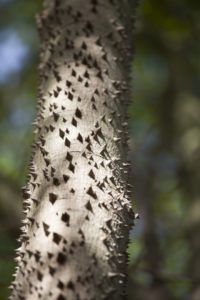 Trees are a wonderful thing. Trees create an ecosystem, providing the habitat and food for birds, squirrels, and forest animals. Trees keep us alive by absorbing carbon dioxide and other potentially harmful gases including carbon monoxide and sulfur dioxide, and releasing the oxygen that we need to breathe. And did you know that three trees planted near a building in just the right spot can cut air-conditioning costs up to 50 percent? Or how about the fact that trees increase your property value? That’s right, if your house is surrounded by trees the value of your property could increase 18 to 25 percent. But some trees are good for something else too, your oral health. Did you know there was such a thing as a toothache tree?
Trees are a wonderful thing. Trees create an ecosystem, providing the habitat and food for birds, squirrels, and forest animals. Trees keep us alive by absorbing carbon dioxide and other potentially harmful gases including carbon monoxide and sulfur dioxide, and releasing the oxygen that we need to breathe. And did you know that three trees planted near a building in just the right spot can cut air-conditioning costs up to 50 percent? Or how about the fact that trees increase your property value? That’s right, if your house is surrounded by trees the value of your property could increase 18 to 25 percent. But some trees are good for something else too, your oral health. Did you know there was such a thing as a toothache tree?
The Zanthoxylum Clava-Herculis Tree
The Zanthoxylum clava-herculis tree, and the related Zanthoxylum americanum tree, are also referred to as Hercules’ club (because of the dramatic spines that stick out of a very wide base), the prickly ash, “tingle tongue,” and the toothache tree. The toothache tree is a distinctive looking tree that can be found in thickets, on the edge of forests, and in hedgerows in East Texas, and further west. It is a small deciduous tree with large prickly spines along its trunk. Native Americans along the eastern coast of the United States taught early settlers about the medicinal value of the tree. They would place a spine between their cheek and gum to alleviate toothache. All parts of the tree, however, including the leaves, bark, twigs, and spines will produce a tingling numbness when chewed or sucked. Native Americans used all parts of the tree to relieve various ailments including:
- Toothache and other pain
- Digestive problems
- Sore muscles
- Sore throat
- Rheumatism
- Skin diseases
- Headaches
- Varicose veins

